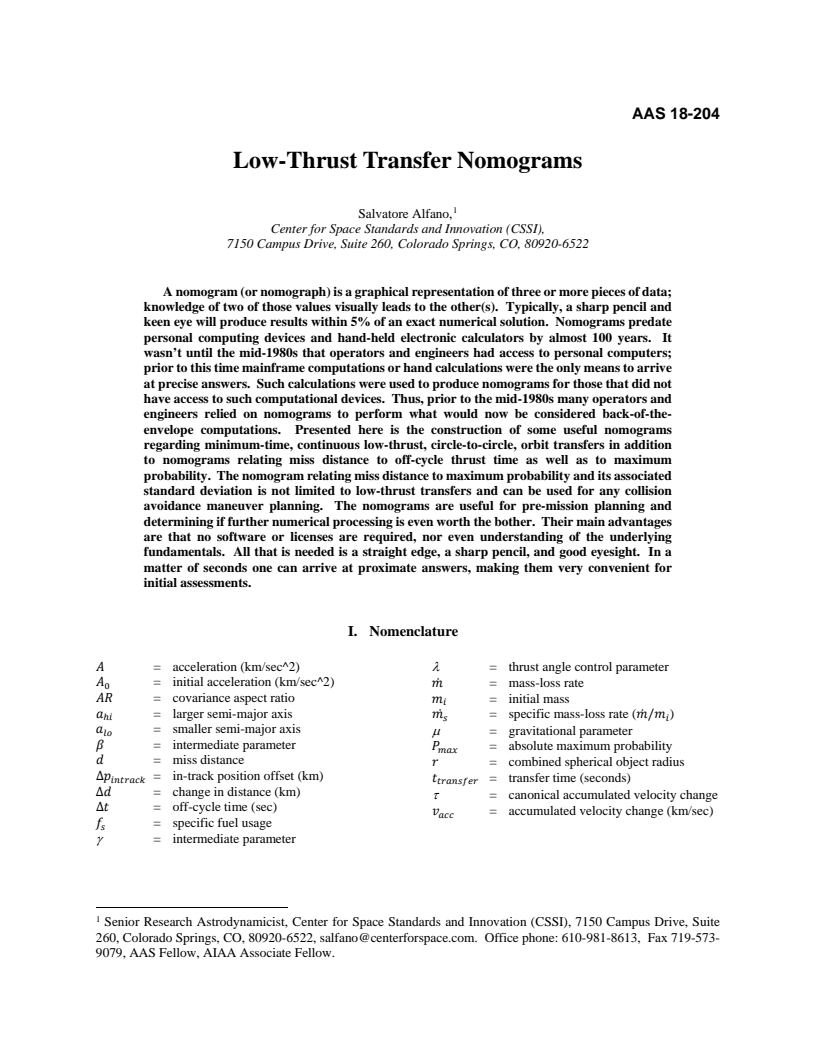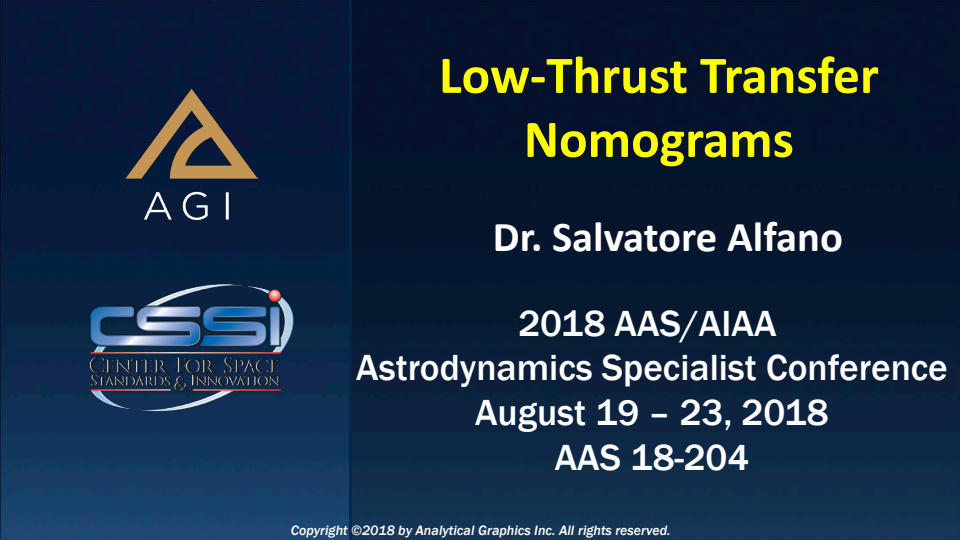Low-Thrust Transfer Nomograms


Id: 310
Type: Conference paper
Published: 08/18/2018
Event: AAS/AIAA Astrodynamics Specialist Conference 2018
Authors:
Click an author to filter the list of related assets below.Abstract:
A nomogram (or nomograph) is a graphical representation of three or more pieces of data; knowledge of two of those values visually leads to the other(s). Typically, a sharp pencil and keen eye will produce results within 5% of an exact numerical solution. Nomograms predate personal computing devices and hand-held electronic calculators by almost 100 years. It wasn’t until the mid-1980s that operators and engineers had access to personal computers; prior to this time mainframe computations or hand calculations were the only means to arrive at precise answers. Such calculations were used to produce nomograms for those that did not have access to such computational devices. Thus, prior to the mid-1980s many operators and engineers relied on nomograms to perform what would now be considered back-of-the-envelope computations. Presented here is the construction of some useful nomograms regarding minimum-time, continuous low-thrust, circle-to-circle, orbit transfers in addition to nomograms relating miss distance to off-cycle thrust time as well as to maximum probability. The nomogram relating miss distance to maximum probability and its associated standard deviation is not limited to low-thrust transfers and can be used for any collision avoidance maneuver planning. The nomograms are useful for pre-mission planning and determining if further numerical processing is even worth the bother. Their main advantages are that no software or licenses are required, nor even understanding of the underlying fundamentals. All that is needed is a straight edge, a sharp pencil, and good eyesight. In a matter of seconds one can arrive at proximate answers, making them very convenient for initial assessments.
Keywords:
Click a keyword to filter the list of related assets below.Citation:
Alfano, S., “Low-Thrust Transfer Nomograms,”2018 AAS/AIAA Astrodynamics Specialist Conference, Snowbird Utah USA, 18 August 2018.
Papers with related authors:

Using Spacebook and Cesium to Promote and Enhance Flight Safety
Read More
Actionability and Persistence Of Conjunction Data
Read More
Actionability and Persistence of Conjunction Data
Read More
Synthetic Covariance Production Using a New Digital Approach
Read More
Addressing the debilitating effects of maneuvers on SSA accuracy and timeliness
Read More
Actionability and Persistence of Conjunction Data
Read More



Comparison of predicted and observed spacecraft encounters from Russian ASAT test
Read More
Efficient assessment of long-term encounter rates with CSSI’s volumetric encounter method
Read More
Russian ASAT Debris Cloud Evolution and Risk
Read More
Evaluation of LEO conjunction rates using historical flight safety systems and analytical algorithms
Read More
Innovative LCOLA tool prioritizing accuracy, launch access and efficiency
Read More
SSA positional and dimensional accuracy requirements for Space Traffic Coordination and Management
Read More
Risk Assessment of Recent High-Interest Conjunctions
Read More
Results of comprehensive STCM data fusion experiment
Read More
Risk Assessment of Recent High-Interest Conjunctions
Read More
LEO constellation encounter and collision rate estimation: an update
Read More
The cost of not doing debris remediation
Read More
The technical challenges of better Space Situational Awareness and Space Traffic Management
Read More
Probability of Collision: Valuation, variability, visualization, and validity
Read More

A comprehensive assessment of collision likelihood in Geosynchronous Earth Orbit
Read More

Probability of Collision: Valuation, Variability, Visualization, and Validity
Read More

Updated Analytical Partials for Covariance Transformations and Optimization
Read More
